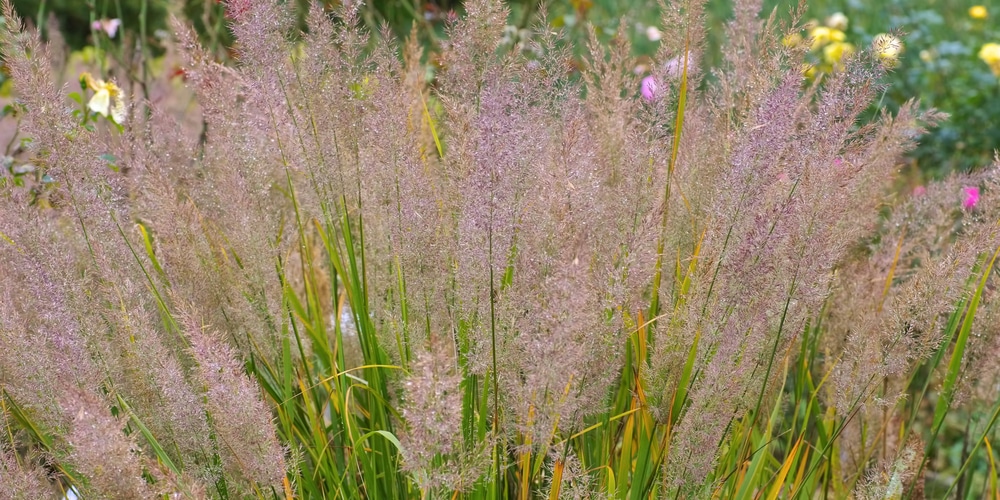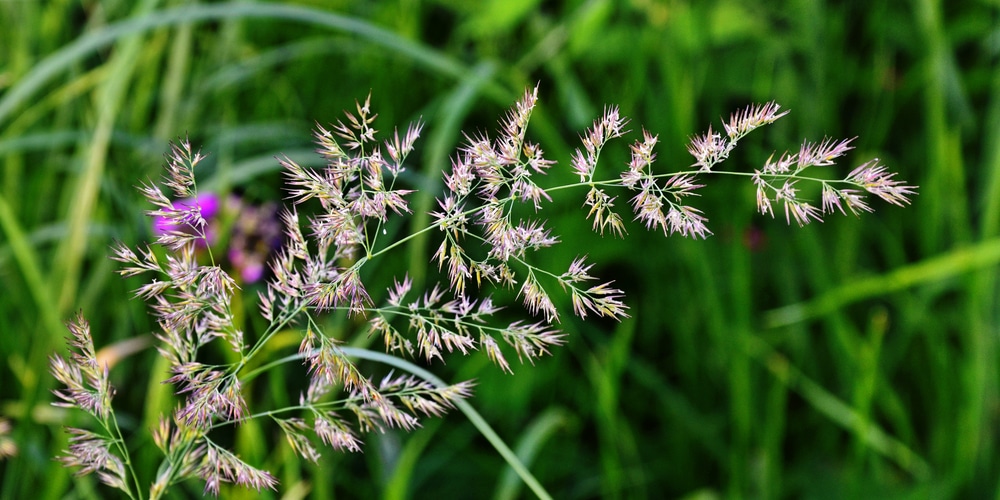Fall blooming reed grass is an ornamental grass variety that goes by many names. It’s often called feather reed grass or Korean reed grass and has the botanical name Calamagrostis Brachytricha. This beautiful grass will make an excellent addition to any yard and will add color to your landscape throughout the fall.
Fall blooming reed grass looks stunning, as it has tall stems and feather-like blooms that are tinged with pink. This unique grass can be added to oriental gardens, landscaping, and yards. This article will tell you everything you need to know about caring for Calamagrostis Brachytricha.
What is Fall Blooming Reed Grass?

Fall Blooming Reed Grass blooms in the late summer and throughout the fall. It looks great in any yard and is especially beautiful in an oriental or zen garden. This plant is often used to add interest to parks and gardens in the fall when most plants have finished flowering. This feathered grass makes an attractive addition to a rain or shade garden and can be planted in a native meadow. Homeowners often plant Fall Blooming Reed Grass as a border, and it grew particularly well in moist areas near ponds or streams.
In the spring, the leaves and stems look green with glossy foliage. During the summer months, airy panicles will begin to develop on the tall stalks. The grass produces pink seed heads by late August and change into a yellow and then tan color for the fall season.
Korean Reed Grass is fast-growing and can reach a height of up to 36 inches. During the summer and fall, plumes will grow, which will increase the plant’s height to 48 inches. If you decide to grow Fall Blooming Reed Grass, you’ll need ample space as it can spread to a diameter of up to 24 inches.
Fall Blooming Reed Grass is often used in large-scale landscapes and looks excellent when mass planted. You’ll sometimes find it growing in urban displays such as a roundabout, along the roadside, or outside shopping malls. As the grass has very deep roots, it’s often grown on muddy banks and in areas where landslides are common to help n prevent erosion. The plant’s seeds will also attract birds to your yard in the fall and provide an excellent food source for local birds.
How to Care for Fall Blooming Reed Grass
Calamagrostis Brachytricha grows well in USDA hardiness zones 4 to 9, so it’ll do fine in places like Kansas City, all the way down through Mississippi. This grass variety is very diverse as it likes to grow in the sunshine but can also thrive in partial or even full shade. The plant is relatively heat resistant and does well in hot climates as long as it’s provided with enough water. It’s also very versatile when it comes to soil type and pH range and can even tolerate clay-like soils.
Fall Blooming Reed Grass will self-seed in the right conditions, so you may find that it spreads to other areas of your garden. The seeds can also be spread by birds.
Planting and Watering Needs
When you first plant your Fall Blooming Reed Grass, it’s essential to provide the plant with enough water so that it can establish its rooting system. Continue to water well throughout the growing season for the first year. Once your grass has established itself, you can reduce watering slightly but should supply irrigation during the summer, especially if you live in a hot climate.
Fall Blooming Reed Grass won’t flower until it’s matured, so you may need to wait a year before your plant blooms. Once the plant flowers, it’s a lovely sight, and the feathery plumes will last throughout the fall and until the first winter frosts arrive. Many people like to harvest some of the plumes to use in a dried flower arrangement.
Pruning
It’s recommended that you prune Fall Blooming Reed Grass in the late winter. Cutting off the stems will encourage the plant to put on new growth in the spring. Cut the grass back to six inches of the crown in the late winter.
Pests and Disease
FBRG (Calamagrostis Brachytricha) isn’t really affected by pests or diseases. If you live in a very hot, humid climate, your grass may suffer from fungal spots.
Conclusion
Calamagrostis Brachytricha is generally considered low maintenance. It can grow in various locations and soil types and thrive as long as it gets enough water. The grass grows feathery plums that bloom in the later summer and throughout the fall.
Related:
